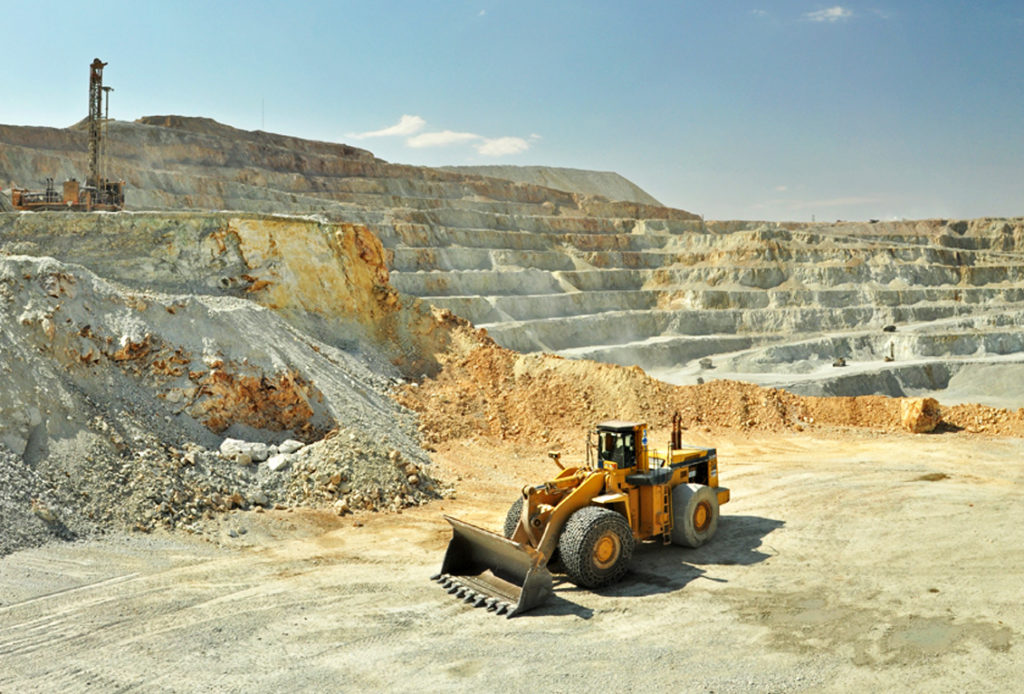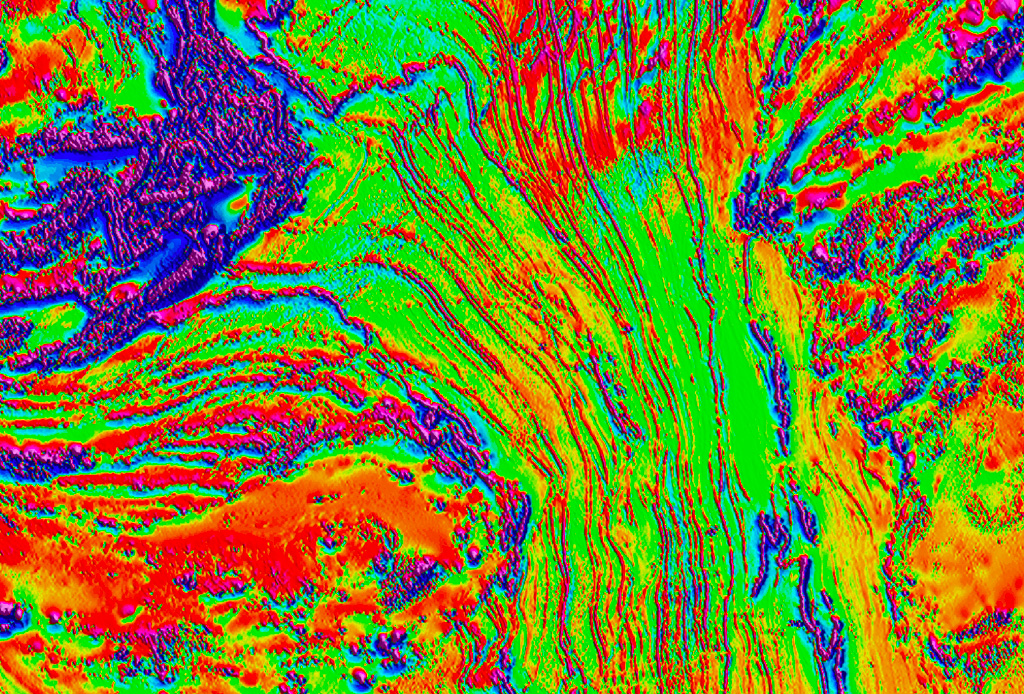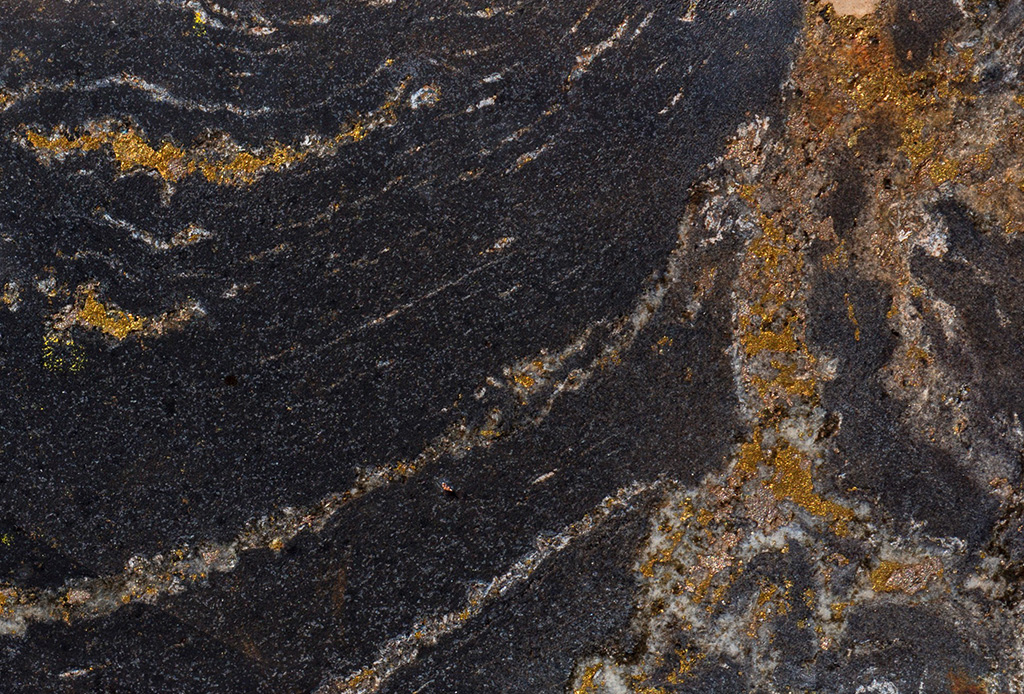Fully-constrained implicit modelling at Sishen Mine, Northern Cape, South Africa
In 2008, Tect were approached by Kumba Iron Ore’s Geotechnical Engineering Department to construct a 3D lithological and structural model for a 5-year design of Sishen North Mine. The model incorporated historical mapping, Tect mapping, drillhole and remote sensing data, and accurate representations of all lithologies, ore types, major structures and joint domains within Transvaal Supergroup lithologies. This constituted the first fully-constrained 3D Geomodel of Sishen Mine, which was subsequently expanded in 2012, culminating in a 3D Geomodel of the entire mine to the end of its life, covering a strike length of 14 km, a width of 3,2 km and a depth of >400 m. This volume of interest incorporated >5 000 mapping points, >21 000 drillholes and >2,2 million meters of drilling.
Kumba took the decision to adopt conditional geometrical modelling, first in Micromine, then in Leapfrog, in 2014/2015. Tect were tasked with creating the first dynamic, RBF-driven 3D Geomodel, termed the Sishen Baseline Model in 2015. This very large volume of interest was subdivided into three parts and, after a concerted mapping phase by Tect Geoscientists, was modelled over the next 8 months, resulting in a single Leapfrog geomodel, which underwent evaluation and MRM analysis in parallel with Sishen’s longstanding SURPAC model. Update and development of the Leapfrog model, incorporating drone-based UAV data, is ongoing.
The benefits of a fully-constrained, implicit 3D geomodel have also become apparent from the model’s use downstream by Geotechnical Engineering, Hydrogeology, Mine planning and Exploration. For instance, apparent dip maps, generated by intersecting key surfaces, such as lithological contacts and bedding, with a planned design or shell, have highlighted focus areas for early risk mitigation. At the same time, design sectors that showed favourable geometrical intersection between bedding and the planned design were identified. Design parameters from this analysis were included in the geotechnical block model, the application of which allowed the Geotechnical Engineers at Sishen to add approximately ZAR1 billion of value through slope design optimisation, thereby saving on waste stripping and, at the same time adding over 50 mt of ore to the inventory. The science behind this work was published as:
A practical methodology to define geotechnical design sectors in structurally-controlled anisotropic environments by Marnus Bester of Kumba, and Ian Basson and Corné Koegelenberg of Tect in The Southern African Institute of Mining and Metallurgy: Slope Stability 2015
A risk-based methodology to improve the definition of geotechnical sectors in slope design by Marnus Bester of Kumba, Thomas Stacey, Ian Basson, Corné Koegelenberg and Pieter Creus of Tect, and Lorin Lorig and Alex Cabrera of Itasca in The Journal of the Southern African Institute of Mining and Metallurgy, Volume 119, 2020
Tect has a policy of showcasing its work, in co-operation with colleagues and clients in the industry, in international peer-reviewed journals. The workflows and analyses required for the construction of the implicit Sishen Baseline Model were published in two articles. The first article details the planning and workflow required to construct the complex set of geometries at Sishen Mine:
3D implicit modelling of the Sishen Mine: new resolution of the geometry and origin of Fe mineralization by Ben Stoch, Chris Anthonissen, M-J McCall and Ian Basson of Tect, and Jacques Deacon, Elsabie Cloete, Joanie Botha, Jean Britz, Marius Strydom, Deon Nel and Marnus Bester of Kumba in Mineralium Deposita. doi.org/10.1007/s00126-017-0784-y 2017.
The second article focuses on the complex structural history of the area and identified new relationships between major structures and mineralized zones:
Ore-structure relationships at Sishen Mine, Northern Cape, Republic of South Africa, based on fully-constrained implicit 3D modelling by Ian Basson, Chris Anthonissen, M-J McCall and Ben Stoch of Tect, Jean Britz, Jacques Deacon, Marius Strydom, Elsabie Cloete, Joanie Botha, Marnus Bester and Deon Nel of Kumba in Ore Geology Reviews 86, 2017.
Please contact us at info@tect.co.za for more information or to obtain a digital copy of these publications.


